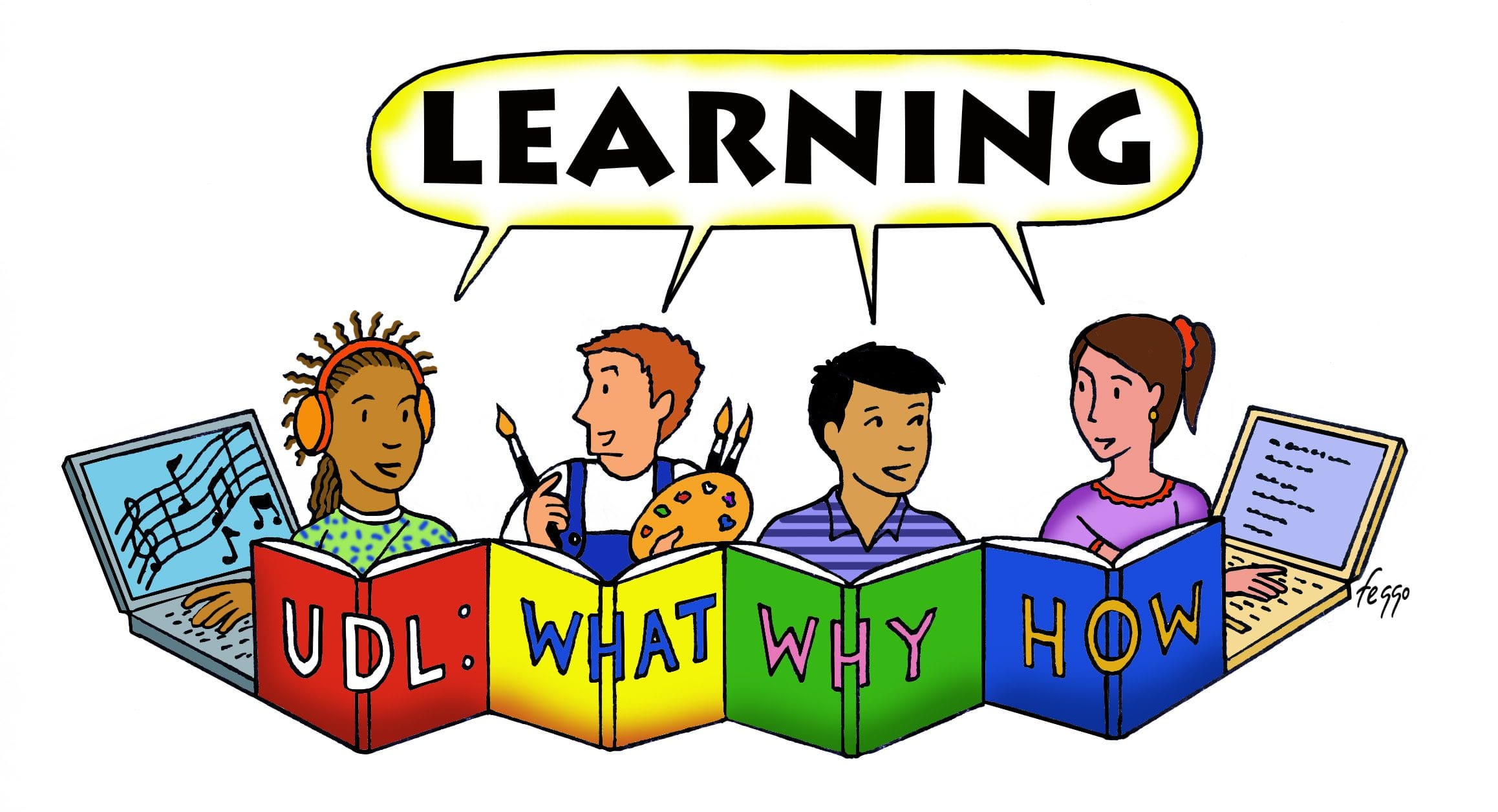UDL چیک لسٹ سے تفصیلات شامل کرنا
ایک مقصد بنائیں اور یقینی بنائیں کہ تمام مواد مقصد کی حمایت کرتا ہے۔
The activity as outlined is designed to support the goal. You can assess how successful you were in achieving your goal by adding in some check-ins. For example: Repeat theater vocabulary throughout and by the middle of the activity, ask students to fill in the blank instead of giving them the word. “We need someone else to add onto our frozen picture, our ___.” At the top of the activity, you can introduce an “actor tools” checklist: voice, body, imagination. Afterward, ask students: “Did we use our voices? If so, sing me an ‘ahhh.’ Did we use our bodies? If so, strike a pose. Did we use our imaginations? If so, give me a thumbs up.”
طلباء کو خود کو منظم کرنے، انتخاب کرنے اور ان کی دلچسپیوں کو شامل کرنے کے مواقع فراہم کریں۔
Prior to the activity, you could add a group brainstorm of options: “What are your favorite things in a park?” Then throughout the activity, students have choices in how they want to participate. They can choose when and what they add to the tableau; they can help direct the tableau; or they can add sounds from the audience. You can lead multiple rounds to let students choose which environments to explore next.
داخلے کے متعدد مقامات بنائیں تاکہ تمام طلباء مساوی طور پر رسائی حاصل کر سکیں اور لطف اندوز ہو سکیں۔
For students who are less verbal or non-verbal, you can eliminate the verbal prompt, “I am a ___,” and put the emphasis on making a clear pose. If there are students who are verbal in the class, this can then become a fun guessing game. You can also have students participate as “director” to help make the tableau clearer.
پہلے کرو پھر غور کرو۔ آخر تک اسے محفوظ کرنے کے بجائے پورے سبق پر غور کریں۔
Students can reflect in various ways on their experience during the activity. During a timeout, between rounds, or after the activity, you can prompt students to share how they’re feeling, inviting them to respond verbally, with a still pose, a dance move, a drawing, etc. Or you might ask students to show with their bodies poses that they liked, that either they made or someone else in the class made.
مختلف طریقوں کا استعمال کرتے ہوئے معلومات کو پیش کرنے اور تیار کرنے کے ذریعے سیکھنے کے متعدد طرزوں کی حمایت کریں۔
- بصری: آپ طالب علموں سے پارک کا اپنا ورژن کھینچ کر سرگرمی شروع کر سکتے ہیں۔ یا آپ ایک گروپ دیوار بنا سکتے ہیں جہاں ہر طالب علم پارک کا ایک حصہ کھینچتا ہے جب تک کہ ایک بڑا گروپ پارک نہ ہو۔ اگر کوئی طالب علم پھنس جاتا ہے تو آپ پارک میں چیزوں کے بصری کے ساتھ بھی آ سکتے ہیں۔
- زبانی/زبانی وضاحت اور جوابات: سرگرمی کی وضاحت کریں جیسا کہ اوپر بیان کیا گیا ہے۔ سائیڈ کوچ اور بھر میں بیان.
- تحریری/متن پر مبنی مواد: اگر آپ وقت سے پہلے ایک گروپ برین اسٹورم کرتے ہیں، تو آپ پارک میں پائی جانے والی چیزوں کے لیے آئیڈیاز لکھ سکتے ہیں اور لکھ سکتے ہیں۔
- ٹیکنالوجی: اگر دستیاب ہو تو، آپ ایک کمپیوٹر یا ٹیبلیٹ کا استعمال بصری تصویروں کو کھینچنے کے لیے کر سکتے ہیں تاکہ طلباء اپنے دماغی طوفان، پوز، اور/یا ٹیبلو میں پیدا کیے گئے خیالات کے ساتھ مل سکیں۔ آپ پارک میں "زندگی میں دن" کی ویڈیو دکھا کر بھی سرگرمی شروع کر سکتے ہیں۔
- طلباء کے لیے اپنے جسم کو استعمال کرنے اور حرکت کرنے کے مواقع: یہ سرگرمی میں پہلے ہی پکا ہوا ہے۔ آپ نقل و حرکت کو شامل کرنے یا پارک ڈانس موو بنانے کے لیے ٹیبلو بنا سکتے ہیں، جس کا اختتام پارک ڈانس پارٹی میں ہو سکتا ہے۔
- طالب علموں کے لیے لمس اور/یا حسی تجربات میں مشغول ہونے کے مواقع: You can bring in items from a park (e.g., tactile objects like bark, grass, and stones; or essential oils with scents like pine and lavender). Introduce these items as you are setting the scene of the park.
 کوشش کریں
کوشش کریں کوشش کریں
کوشش کریں یاد رکھنا
یاد رکھنا


